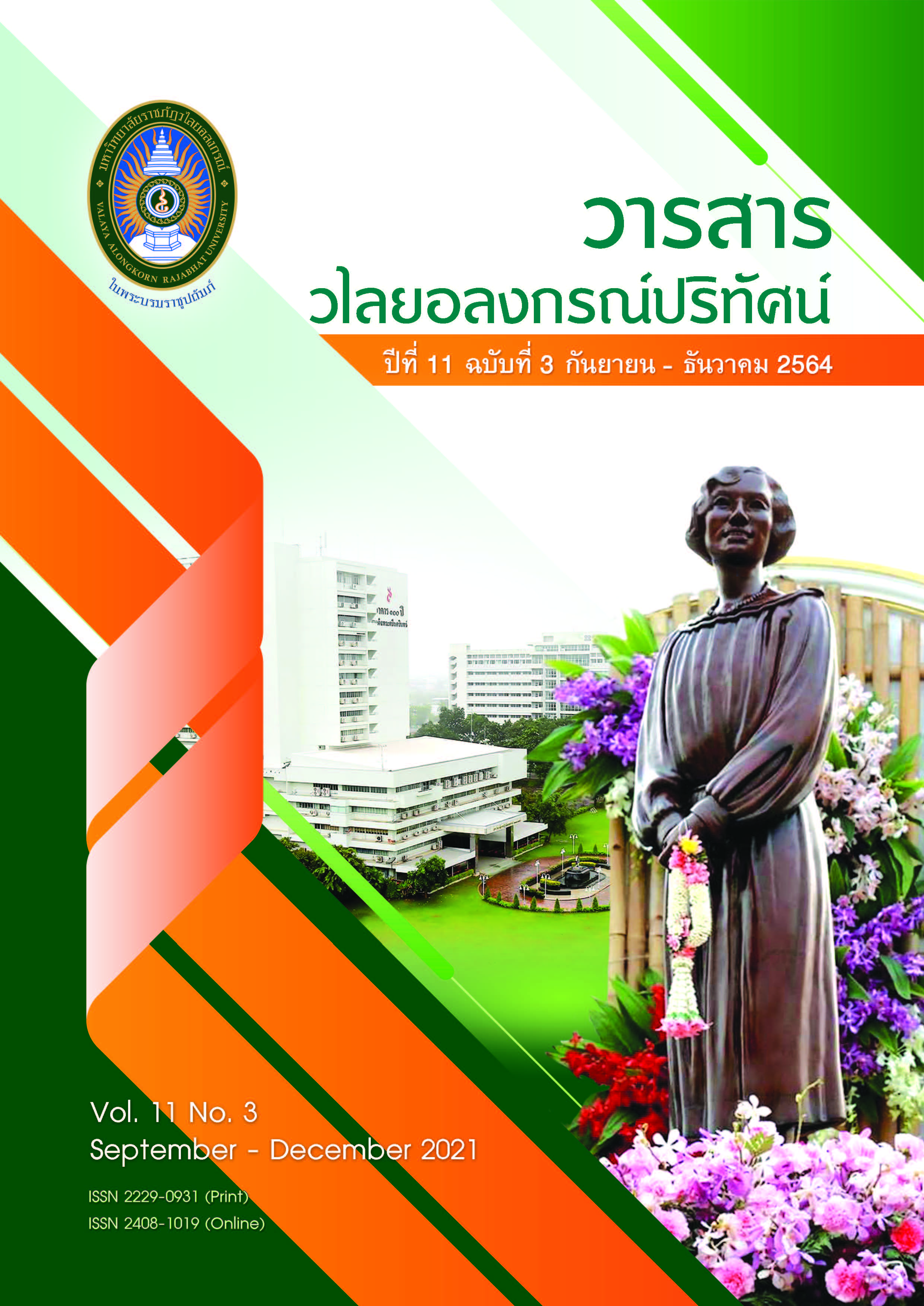สมดุลชีวิตและการทำงานในพยาบาลวิชาชีพ
คำสำคัญ:
สมดุลชีวิตและการทำงาน, แนวทางการสร้างสมดุลชีวิตและการทำงาน, ประสบการณ์สร้างความสมดุลชีวิตและการทำงานบทคัดย่อ
ปัจจุบันสมดุลชีวิตและการทำงานกำลังได้รับความสนใจและเป็นสิ่งที่ถือได้ว่ามีความสำคัญ ในการจัดการทรัพยากรมนุษย์สำหรับองค์กรต่าง ๆ ทั้งภาครัฐและเอกชน ความสมดุลของแต่ละคนมีความแตกต่างกันไม่มีรูปแบบที่แน่นอนขึ้นอยู่กับมุมมองและความต้องการของบุคคลนั้น ความสมดุลชีวิตและการทำงานมีความสำคัญต่อการทำงานของทุกวิชาชีพ พยาบาลเป็นวิชาชีพหนึ่งที่ต้องการความสมดุลของชีวิตและการทำงาน บทความนี้มีวัตถุประสงค์เพื่อนำเสนอแนวคิดของความสมดุลชีวิตและการทำงาน องค์กรในการกับสร้างความสมดุลชีวิตและการทำงาน แนวทางและการประยุกต์ความสมดุลชีวิตและการทำงานของพยาบาลวิชาชีพ รวมทั้งประสบการณ์ความสมดุลชีวิตและการทำงาน พยาบาลวิชาชีพต้องนำเอาแนวปฏิบัติเรื่องความสมดุลชีวิตและการทำงาน มาใช้ในการทำงาน ชีวิตส่วนตัว ครอบครัว นอกจากนี้ผู้บริหารโรงพยาบาลควรเล็งเห็นถึงความสำคัญและสนับสนุนให้พยาบาลมีสมดุลระหว่างชีวิตและการทำงานเพื่อเพิ่ม การคงอยู่ความมั่นคงในวิชาชีพ การทำงานอย่างมีความสุข และมีคุณภาพชีวิตที่ดีต่อไป
เอกสารอ้างอิง
ขนิญร์นัสท์ อินทุลักษณ์ และอารีย์วรรณ อ่วมตานี. (2557). การสร้างสมดุลชีวิตกับงานของพยาบาลวิชาชีพ โรงพยาบาลเอกชนแห่งหนึ่ง. วารสารพยาบาลทหารบก. 15(3): 382-389.
ปิยสุนีย์ ชัยปาณี, เอกสิทธิ์ สนามทอง, อิทธิพัทธ์ สุวทันพรกูล และ ดวงเดือน จันทร์เจริญ. (2563). กลยุทธ์ทางเลือกการสร้างความสมดุลในชีวิตและการทํางานของบุคลากรในองค์กรที่มีสมรรถนะสูงในประเทศไทย. วารสารวิจัยและพัฒนา มหาวิทยาลัยราชภัฏสวนสุนันทา. 12(2): 88-104.
พระไพศาล วิสาโล. (2558). สร้างสมดุลชีวิต. วารสารสุขศาลา. [ออนไลน์], เข้าถึงได้จาก: https://www.visalo.org/article/suksala23.htm. (2564, 10 ธันวาคม).
สำนักงานสถิติแห่งชาติ. (2563). สำรวจภาวะการทำงานของประชากร. [ออนไลน์], เข้าถึงได้จาก:. https://www.ryt9.com/s/nso/3181664 (2564, 10 ธันวาคม).
Ang, M, Hwa, C, & Teh, G. M. (2018). Work intensification and turnover intention in academia: The mediating role of work-life balance. Journal of Asian Scientific Research. 8(5): 188-196.
Bouwmeester, O., Atkinson, R., Noury, L., & Ruotsalainen, R. (2021). Work-life balance policies in high performance organisations: A comparative interview study with millennials in Dutch consultancies. German Journal of Human Resource Management. 35(1): 6-32.
Dhingra, V., & Dhingra, M. (2021). Who doesn’t want to be happy? Measuring the impact of factors influencing work–life balance on subjective happiness of doctors. Ethics, Medicine and Public Health. 16: 1-14.
Gragnano, Andrea, Simbula, Silvia, & Miglioretti, Massimo. (2020). Work–Life Balance: Weighing the Importance of Work–Family and Work–Health Balance. International Journal of Environmental Research and Public Health. 17(3): 1-20.
Greenhaus, J. H., & Allen, T. D. (2011). Work–family balance: A review and extension of the literature. In J. C. Quick & L. E. Tetrick (Eds.), Handbook of occupational health psychology. American Psychological Association.
Greenhaus, J. H., Collins, K. M., & Shaw, J. D. (2003). The relation between work–family balance and quality of life.
Journal of Vocational Behavior. 63(3): 510-531.
Jones, F., Burke, R. J, & Westman, M. (2006). Work-life balance: key issues. Work-life balance: A psychological perspective, 1-9.
Kalliath, T., & Brough, P. (2008). Work-life balance: A review of the meaning of the balance construct. Journal of management & organization. 14(3): 323-327.
Koon, V. (2020). A multilevel analysis of work–life balance practices. Asia Pacific Journal of Human Resources. [Online], Available: https://doi.org/10.1111/1744-7941.12268. (2021, 4 February).
Lo, W. Y., Chiou, S. T., Huang, N., Chien, L. Y. (2016). Long work hours and chronic insomnia are associated with needlestick and sharps injuries among hospital nurses in Taiwan: A national survey. International Journal of Nursing Studies. 64: 130-136.
Sirgy, M. J., & Lee, D. (2018). Work-Life Balance: an Integrative Review. Applied Research in Quality of Life. 13(1): 229-254.
Walton, R. E. (1975). Criteria for Quality of Working Life. In Davis, L. E., Cherns, A. B. and Associates (Eds.). The Quality of Working Life. New York: The Free Press.
Yildirim, D., & Aycan, Z. (2008). Nurses’ work demands and work-family conflict: A questionnaire. International Journal of Nursing Studies. 45(9): 1366-78.
ดาวน์โหลด
เผยแพร่แล้ว
รูปแบบการอ้างอิง
ฉบับ
ประเภทบทความ
สัญญาอนุญาต
ข้อความที่ปรากฏในบทความแต่ละเรื่องในวารสารวไลยอลงกรณ์ปริทัศน์ เป็นความคิดเห็นของผู้นิพนธ์แต่ละท่าน มิใช่เป็นทัศนะและมิใช่ความรับผิดชอบของกองบรรณาธิการจัดทำวารสาร และ
มหาวิทยาลัยราชภัฏวไลยอลงกรณ์ ในพระบรมราชูปถัมภ์


